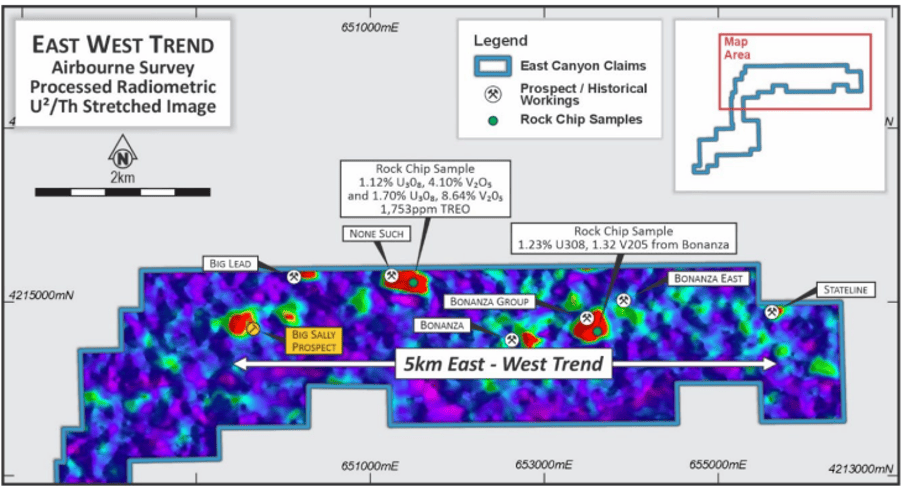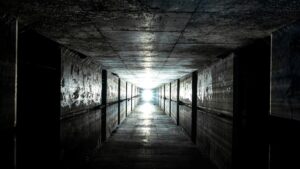Uvre sets out for potential uranium-vanadium-REE targets at Big Sally in Utah

Exploration work will test for surface outcropping mineralisation and involve the collection rock chip samples for laboratory analysis. Pic via Getty Images
- Mapping and sampling begins at Big Sally Prospect
- Big Sally is an untested and previously unknown uranium anomaly identified via a recent airborne radiometric survey
- The program is designed to generate drill targets for future drill programs
Special Report: Uvre begins a program of mapping and sampling at the Big Sally prospect, a newly identified uranium radiometric anomaly, to generate potential drill targets for future drilling.
Uvre’s (ASX:UVA) East Canyon project in the Uravan mineral belt and Salt Wash ore producing districts of the Colorado Plateau in southeastern Utah is an early-stage exploration project comprising 231 claims (18.7km2) prospective for uranium and vanadium.
East Canyon is in close proximity to several significant uranium-vanadium operations, including Energy Fuels’ La Sal Complex mines and development projects, and the White Mesa Mill which is the only fully licensed and operating conventional uranium-vanadium mill in the US.
Historic production in the region amounts to more than 85 million pounds of uranium at an average grade of more than 0.13% U3O8 and more than 440 million pounds of vanadium at an average grade of 1.25% V2O5.
Sampling for uranium, vanadium and rare earth elements
UVA has begun a program of mapping and sampling across East Canyon, focusing on the Big Sally prospect to map any surface outcropping mineralisation and generate targets for future drill programs.
The Big Sally prospect was identified by a recent airborne magnetic and radiometric survey southwest of the Big Lead prospect.
It sits on a 5km anomalous East-West uranium trend in the northern project area, which also includes areas of previously known historical mines and working such as Big Lead, None Such, Bonanza, and Stateline.

Mapping and scintillometer test work will be carried out, and rock chips returning high scintillometer values will be collected and submitted to a certified laboratory for assessment of uranium, as well as sampling for vanadium and rare earth elements.
The program will also focus on structure and bedding in the radiometric areas to better understand possible mineralized strike extensions and help generate potential drill targets.
This article was developed in collaboration with Uvre, a Stockhead advertiser at the time of publishing.
This article does not constitute financial product advice. You should consider obtaining independent advice before making any financial decisions.
Related Topics

UNLOCK INSIGHTS
Discover the untold stories of emerging ASX stocks.
Daily news and expert analysis, it's free to subscribe.
By proceeding, you confirm you understand that we handle personal information in accordance with our Privacy Policy.








